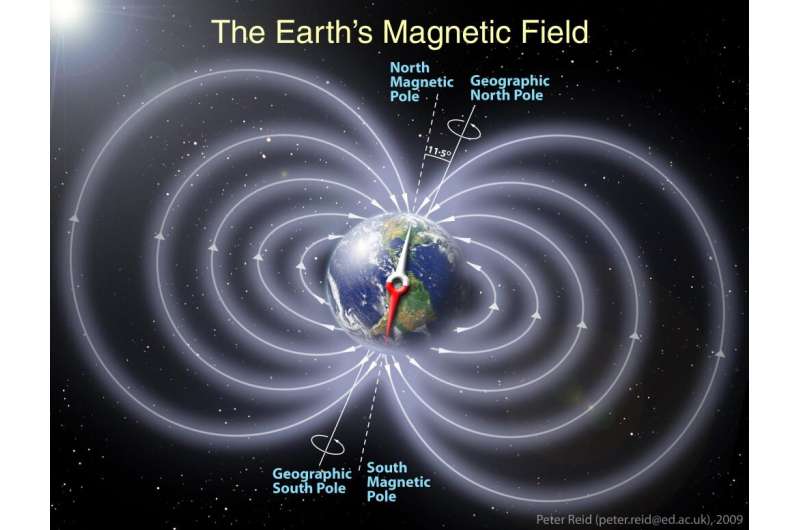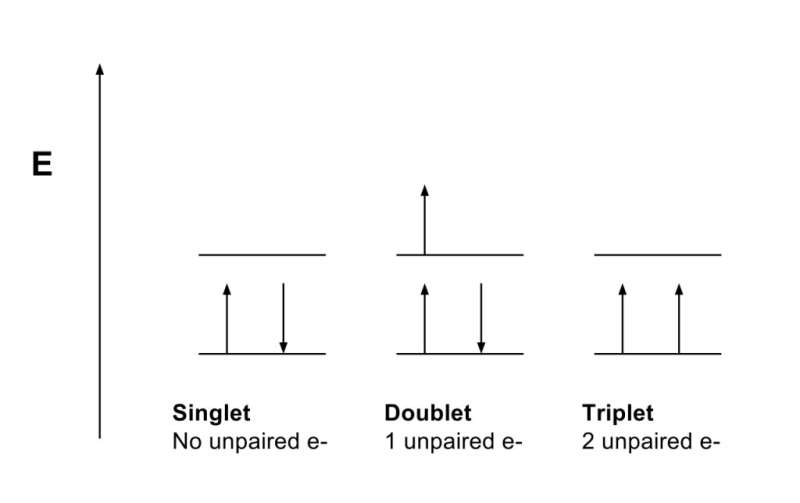How animals sense Earth's magnetic field

The secrets behind magnetoreception—that is, the ability of some animals to sense Earth's magnetic field—are beginning to gradually unravel, thanks in part to a new study that demonstrates magnetic sensitivity in a completely artificial protein, which will help guide further study into what makes this phenomenon possible.
If you have ever wondered how homing pigeons make round trips without GPS, or how pregnant sea turtles find the same beach on which they were born decades earlier to lay their own eggs, it is all thanks to their sense of magnetoreception.
The genesis of this sense, which is also found in birds, lobsters, rainbow trout, newts, mole-rats and other animals, as well as many plants, has long stymied researchers, but a recent study by scientists from the University of Pennsylvania, Temple University, and the University of Oxford provides new insight into a biophysical process known as the radical pair mechanism, which may be a protein-based basis of magnetoreception.
Theories of magnetoreception
There are three basic theories for how magnetoreception works, and they might all be accurate, depending on the animal. The first involves magnetic minerals. Bacteria and phytoplankton generate biological magnetite crystals that allow them to sense Earth's magnetic field. Researchers also believe that birds have them in their beaks.
The second theory, electromagnetic induction, involves animals sensitive to electric charges, such as aquatic animals, that have an internal cellular or neural mechanism that converts electro-receptivity into magnetic sensitivity.
The third theory involves a biochemical reaction that generates radical pairs—quantum entangled molecules with unpaired electrons. Proteins called cryptochromes form radical pairs after they've been activated by energy absorption. Cryptochromes may hold a key to understanding the origin of magnetoreception in birds, which have cryptochromes in their eyes.

When an electron transfer occurs between two molecules, it leaves two unpaired electrons, one on each molecule. The back-transfer of an electron to the original molecule requires the quantum spin of those electrons to be opposite (one spin up and one spin down). Those spins are always changing between the up and down states and their rates of change can be influenced by a magnetic field. In cryptochromes, radical pairs form from the singlet state, meaning that both unpaired electrons in the radical pair have opposite spins. When a radical pair enters the triplet state, in which both unpaired electrons have the same spin (both up or both down), back-electron transfer is not possible until the radical pair returns to the singlet state. Therefore, the magnetic field is able to influence how long the radical pair is around.
According to lead author Chris Bialas, one of the breakthroughs in the study is the formation of radical pairs from the triplet, not singlet state.
"The radical pair is less reactive in the triplet state," says Bialas, "which means it's lower in energy and operates over longer periods of time."
Scientists had been skeptical that the triplet state could be used for magnetoreception, so these findings open the door to many proteins that could play a role in this process.
Artificial magnetoreception
Researchers induced magnetic sensitivity via the radical pair mechanism by using an 'artificial protein." In natural cryptochromes it takes a compound called a Flavin and three tryptophans, which are a type of amino acid, to create a magnetosensor, but Bialas and his colleagues created a cryptochrome-like sensor with a flavin and a single tryptophan, demonstrating the ability to "do more with less." Their artificial protein also functions at room temperature, whereas most other similar experiments are conducted in cryogenic temperatures.
Margaret Ahmad, Research Director for Sorbonne University's National Center for Scientific Research, notes that the study demonstrates the ability to design molecules "to have divergent reaction mechanisms from their biological 'templates,'" and that the experiment "essentially produces a minimal, artificial compound that mimics the response of the biological receptor."

Because artificial proteins are simpler and hardier than natural proteins, the "real test will have to be done in cryptochromes that are naturally-occurring," says Bialas. However, his team's study indicates that magnetic sensitivity can be created with a wider variety of proteins than previously thought.
Quantum effects
Questions about how animals use magnetoreception have given way to a new field: quantum biology. According to Bialas, many scientists are now wondering how quantum mechanics affect biology. Humans have cryptochromes—they regulate circadian rhythms, among other things—and scientists are exploring whether magnetic fields could cause diseases via cryptochromes. Ahmad underscores the importance of this work by saying that it's "increasingly evident that even weak electromagnetic fields, including low-frequency radio fields and those from electronic equipment and power grids, have physiological effects on a variety of cell types."
Ahmad also notes the medical potential of magnetic field effects. In her own research, she experiments with oscillating low frequency magnetic fields that generate reactive oxidative species—a stress molecule that kills cells in high doses, but can be used to treat injuries in low doses.
A recent study also suggests that some humans may be sensitive to magnetism.
Magnetoreception also has astrobiological implications, especially on planets with stronger (and less atmospherically shielded) magnetic fields than Earth's. Bialas believes that extraterrestrial organisms could use magnetoreception to find resources such as iron, or to avoid poisonous substances likeChromium (VI) salts . Organisms could use their magnetic sense to evade prey or to hunt ferric bacteria.
"It opens up a whole new world of sensing, one that extraterrestrial organisms could use every day," Bialas says.
Ahmad also notes that "magnetic field research is crucial to Mars missions or any extended space travel," given the "profound effects" of removing organisms from the terrestrial magnetic field. Scientists will have to study those effects, as well as how to compensate for them, in order to prepare humans to live on Mars or elsewhere.
More information: The work was supported by NASA Astrobiology through the Exobiology & Evolutionary Biology Program.
Source: Astrobiology Magazine
This story is republished courtesy of NASA's Astrobiology Magazine. Explore the Earth and beyond at www.astrobio.net .



















